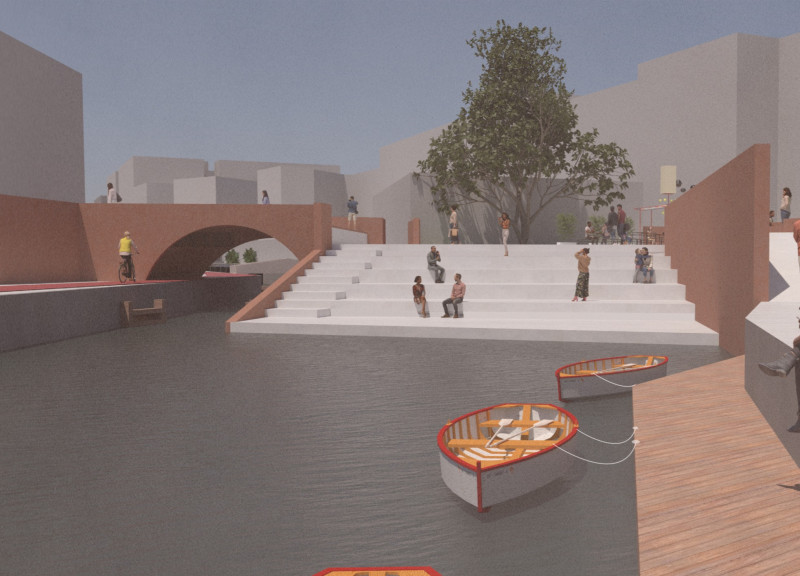5 key facts about this project
The Naviglio canal design in Milan aims to restore a significant waterway, turning it into an active urban space that encourages both local residents and visitors to engage with their surroundings. Inspired by "il filo rosso," or the red thread, the design reflects a connection to Milan's cultural and historical identity. By reinterpreting the canal within the modern urban setting, the plan fosters social interaction and enriches recreational opportunities for everyone who visits.
Historical Preservation
A key focus of the design is the preservation of the existing locks, originally created by Leonardo Da Vinci. These historic elements will be integrated into the overall scheme, ensuring that the canal retains its architectural significance. This approach honors the history of the site while also establishing a dialogue between the past and the contemporary landscape.
Multifunctional Gatherings
The design incorporates various gathering spaces along the canal. These spaces are flexible and can host different activities, catering to both leisure and potential commercial uses. This variety allows people from different backgrounds to come together, promoting a lively community atmosphere. Visitors will find opportunities for rest, play, and interaction, enhancing their experience of the canal.
Direct Water Access
A notable aspect of the design is a large staircase that climbs down to the water's edge. This feature provides easy access and encourages visitors to connect more closely with the canal. The staircase acts as a vital link between the city and the waterway, inviting people to approach the water and reflecting on the canal's historical importance in the urban environment.
Vegetation and Contextual Integration
The project also introduces greenery along the canal, which helps create a natural and inviting atmosphere. Elements with a red or pink hue are included in the vertical structures, echoing the traditional brick patterns found in Milan. This choice ties the new elements into the local context. With thoughtful landscaping and careful material choices, the design fosters a sense of unity between nature, history, and contemporary urban life, creating a space that respects its origins while catering to the needs of today.






















































